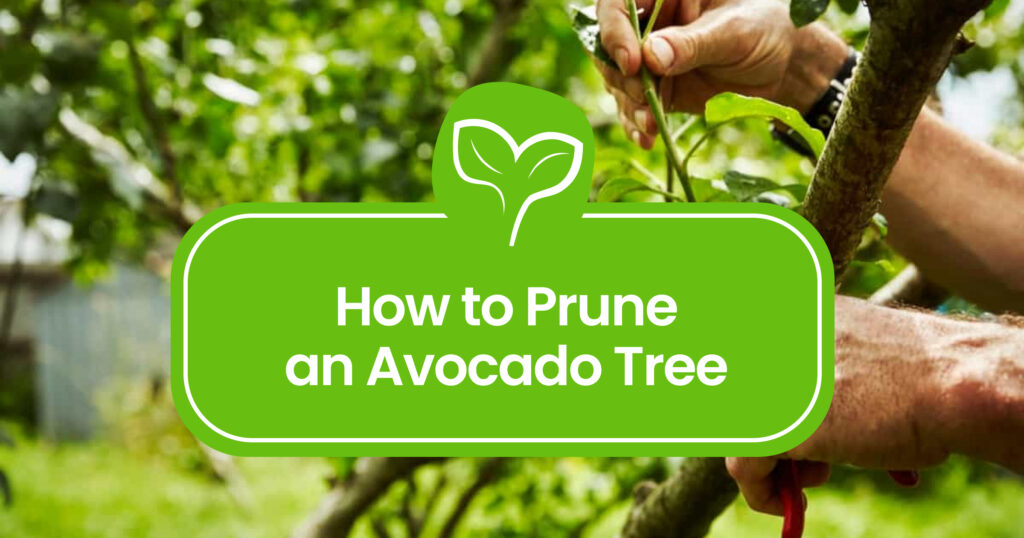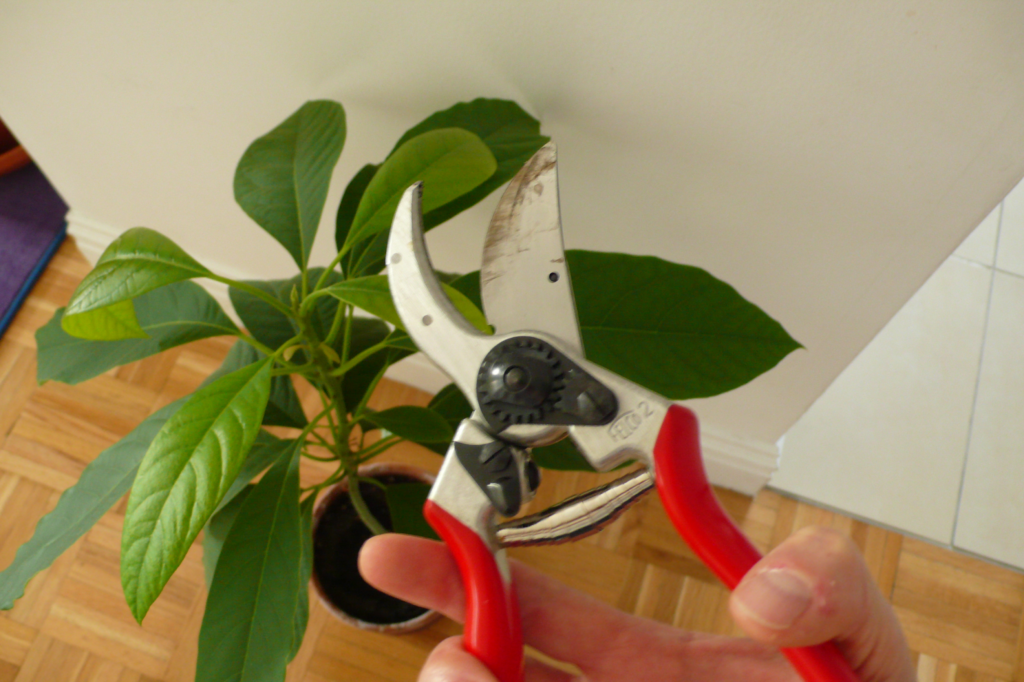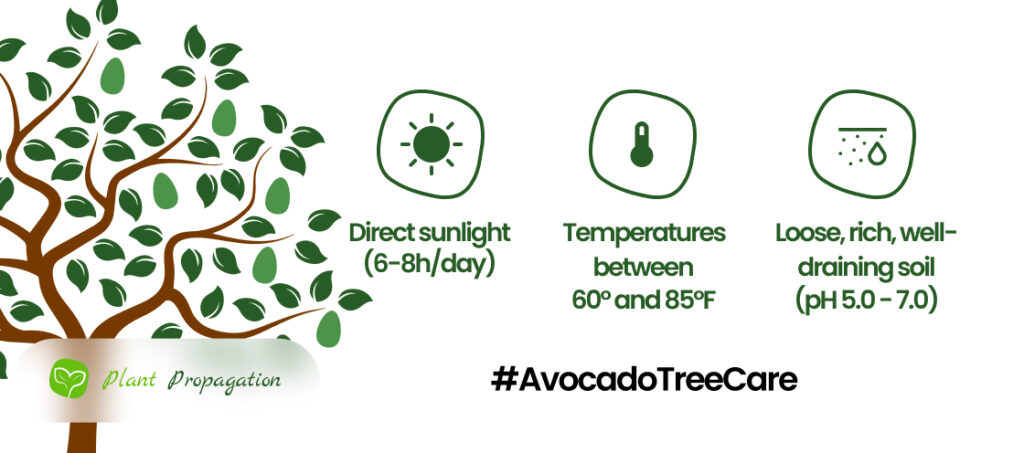
If you want to take care of your Avocado trees, learning when and how to prune it is essential. In this guide, we’ll unravel the ins and outs of giving your avocado trees the trim they need.
From understanding the perfect timing for major cuts to grasping the fundamental rules like pruning low branches and creating canopy openings, we’re here to help you become a pruning pro. We’ll discuss pruning methods, including gradual shaping, specialized approaches like Pyramid Shape and Stumping, and the significance of tree thinning for healthier, more fruitful avocado trees. In addition, we also have tips for pruning smaller, potted avocado trees.
Let’s learn how to prune an avocado tree the right way!
Avocado Tree Pruning Basics
When to Prune Avocado Trees
Timing’s key. Minor trims are okay all year, but major pruning – reserve those for the early months: January through April. Remember, fruit sprouts at twig ends, so heavy trims snip future fruits.
Pruning Principles
Let’s talk rules!
- Prune low horizontal branches for tree access.
- Create canopy “windows” for interior light.
- Space main limbs 3-4 feet apart.
- Rejuvenation may cut back to trunk, impacting year two production.
- Remove weak ‘v-type’ crotches to prevent rot.
- Eliminate deadwood.
- Ensure major cuts align with trunk contour.
- During grove renovation, remove interfering low branches, bad crossings, and splits.
- Balance side growth, remove strong water shoots for a central leader shape.
- Aim for a pyramid shape for better light and fewer barren spots.
- Regular small cuts minimize major pruning needs.
The Tools You’ll Need
Depending on your Avocado Tree’s size (those tiny plants can grow into 30 feet tall giants), you’ll need these tools to prune it safely:
- for pruning small plants & seedlings
- pruning shears or scissors (for small plants)
- for pruning larger trees:

Avocado Tree Pruning Methods
For larger trees, there are several pruning methods we need to understand. Let’s take a look at the most important ones.
Gradual pruning
Gradual pruning is basically not doing anything drastic, just keeping your tree in shape (and size). There are several approaches:
- The Two Cut method: Annually, remove one vertical branch around 20 ft high and a neighboring side branch encroaching on another tree. Cut the vertical branch to a horizontal one to limit regrowth. Trim side branches without leaving stubs.
- Israeli method: This is a five-branch division method. Starting on the southwest side, a branch is removed each year, allowing light to reach lower areas. Over four to five years, branches on opposite sides and the middle are trimmed, ensuring the tree remains productive.
- Pyramid Shape method: The pyramid shape is best achieved by shaping trees early, especially in the nursery. It involves a central leader or two vertically growing leaders. Branches on these leaders should be one-third to half the leader’s thickness, and weaker ones on top than at the base. Additionally, remove strong water shoots in June, August, and October for optimal growth.
Stumping (Stag-horning)
They also call it drastic pruning and you only need to think about it if the tree is so high that picking fruit becomes too much of a hassle. Stumping is like hitting the reset button for your avocado tree. This involves cutting the tree down to about 4 or 5 feet, leaving stubs of large limbs about 2 feet long. Some growers opt to remove all the stubs, leaving only the stump. Promptly whitewash or paint the stumps with a water-based white paint to shield the bark from sunburn. When making the main horizontal cut, ensure a slight slope to prevent water pooling after rain.

Interestingly, no tree sealant is necessary for the cut surfaces, as a natural protective cell layer forms about half to one inch below the cut, reducing fungal invasion and trunk rot. Stumping is best done early in the year after rain threats pass, curbing fungal infections in the wood.
Tree Thinning
When you have too many Avocado Trees in a small area, tree-thinning can significantly increase health & yield.
Thinning trees lets more sunlight reach lower branches, encouraging new growth and fruiting. It boosts yield but to be honest, doesn’t solve high fruit-picking issues. Depending on the situation, this can double the yield of your Avocado Trees.
To start, map the grove and remove weak trees. Thinning diagonally helps light reach all sides. Further thinning might be needed later if trees crowd again. In California, groves are usually thinned once, followed by topping and selective pruning.
How to Prune an Avocado Tree in a Pot
Pruning is also important for those who have Avocado Trees in pots. We have to talk about simple shaping and annual trimming.

Shaping your Young Tree
- Sanitize Your Gear: Before the snipping spree, dunk those shears or clippers in a water-bleach mix for about 30 minutes. Clean tools mean a healthy tree!
- Trim the Central Stem: When the stem hits 6 inches, cut it down to 3 inches. This helps your tree build strong branches later.
- Tip and Trim: At 12 inches tall, trim the top and upper leaves to sprout new growth. A sharp snip above a bud does the trick.
- Branch Trimming: Those lateral branches need a little attention too. Once they reach 6–8 inches, trim the tips off to keep things tidy.
Annual Shaping
- Clean Your Tools Before any pruning, make sure those tools are bacteria-free. Soak them in water-bleach mix for 30 minutes.
- Best Time to Prune Annual pruning in autumn or winter, pre-spring growth, keeps your tree in shape.
- Trim the Heights Focus on the upper limbs for a neat look. Snip clean with sharp tools to keep them around 6–8 inches.
- Stake Up When it hits 2 feet tall, help it stand tall by staking it up. Tie a loose piece of twine around the central stem and the stake.
- Proportional Pruning Envision that perfect tree shape before you trim. Aim for a balanced, proportional look to keep your avocado tree happy and healthy in its pot.
Aftercare
As discussed before, avocado trees have pretty good natural protection against diseases, meaning you don’t have to use tree sealant after normal pruning. However, making sure that your tree gets enough light and nutrients is very important.

There you have it – your avocado tree pruning crash course! Remember, practice makes perfect, so don’t fret if it’s not a masterpiece right away. With time and a bit of snipping finesse, your avocado tree will flourish, and you’ll be proudly feasting on creamy, delicious avocados in no time!
Frequently Asked Questions
Trimming avocado trees needs a clear plan, unique to each tree.
- Shape them early, especially for a central-leader style.
- Keeping tools clean avoids tree sickness.
- Prune branches to let more light in.
- Balance growth for a healthy, pyramid-shaped tree, boosting productivity.
How to prune an avocado tree to keep it small?
If you want to keep your Avocado Tree small, you need to understand that the harder you prune, the faster and stronger your tree will grow back. Instead of hard pruning, frequent thinning cuts are the way to go here.
When to prune an avocado seedling?
When your Avocado plants hit 6in (15cm) in height, trim half of the main stem (right above the leaf) to prompt branching. This method promotes lush, nicely-formed plants.
Should I cut the top off my avocado tree?
If you want to keep your Avocado tree smaller, you can definitely cut off the top from time to time. Remember, if you are pruning your Avocado tree hard, it will grow back even harder. Selective light pruning is the way to go here.

